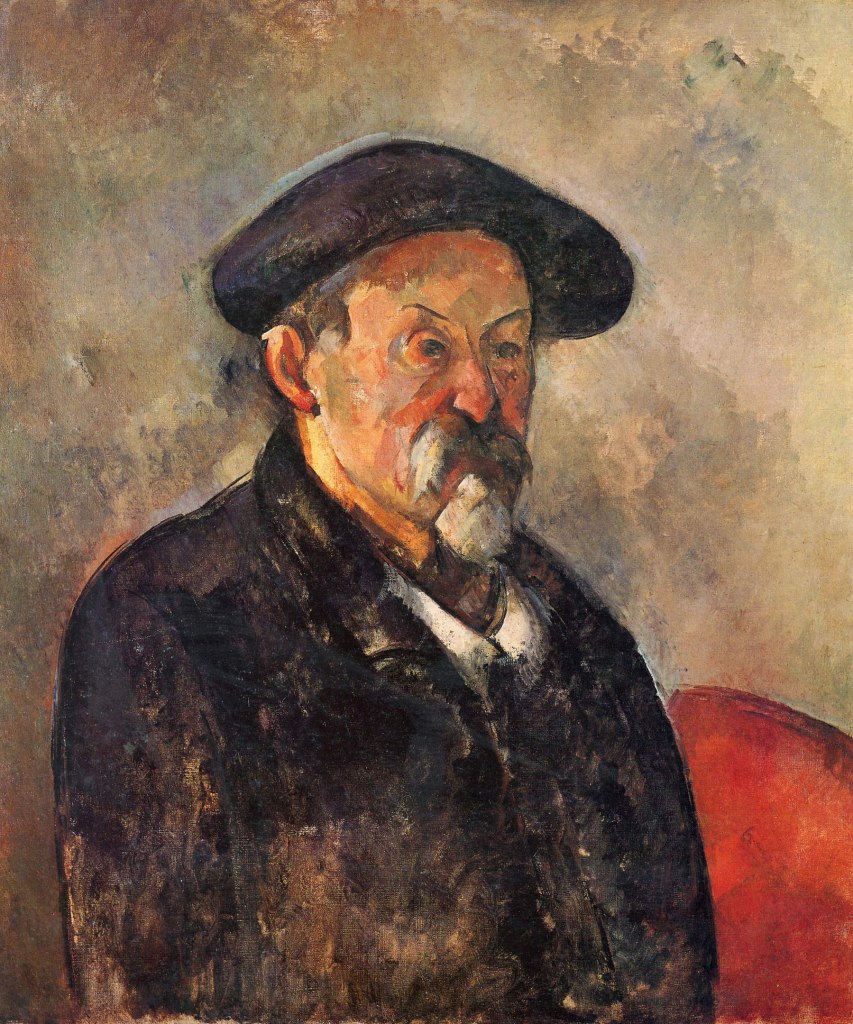
French artist and Post-Impressionist painter
Paul Cézanne
was born,
January 19, 1839
in Aix-en-Provence,
a city and commune in Southern France, north of Marseille.
❦
Cézanne work laid the foundations of the transition from the 19th-century conception of artistic endeavor to a new and radically different world of art in the 20th century.
He is said to have formed the bridge between late 19th-century Impressionism and the early 20th century’s new line of artistic enquiry, Cubism. Cézanne’s often repetitive, exploratory brushstrokes are highly characteristic and clearly recognizable. He used planes of colour and small brushstrokes that build up to form complex fields. The paintings convey Cézanne’s intense study of his subjects. Both Matisse and Picasso are said to have remarked that Cézanne “is the father of us all”.
In Paris, Cézanne met the Impressionist Camille Pissarro. Initially the friendship formed in the mid-1860s between Pissarro and Cézanne was that of master and disciple, in which Pissarro exerted a formative influence on the younger artist. Over the course of the following decade their landscape painting excursions together, in Louveciennes and Pontoise, led to a collaborative working relationship between equals.
Cézanne’s early work is often concerned with the figure in the landscape and includes many paintings of groups of large, heavy figures in the landscape, imaginatively painted. Later in his career, he became more interested in working from direct observation and gradually developed a light, airy painting style. Nevertheless, in Cézanne’s mature work there is the development of a solidified, almost architectural style of painting. Throughout his life he struggled to develop an authentic observation of the seen world by the most accurate method of representing it in paint that he could find. To this end, he structurally ordered whatever he perceived into simple forms and colour planes. His statement “I want to make of impressionism something solid and lasting like the art in the museums”, and his contention that he was recreating Poussin “after nature” underscored his desire to unite observation of nature with the permanence of classical composition.
❦
So here’s a glimpse of his work & words


❦
“Genius is the ability to renew one’s emotions in daily experience.”
❦
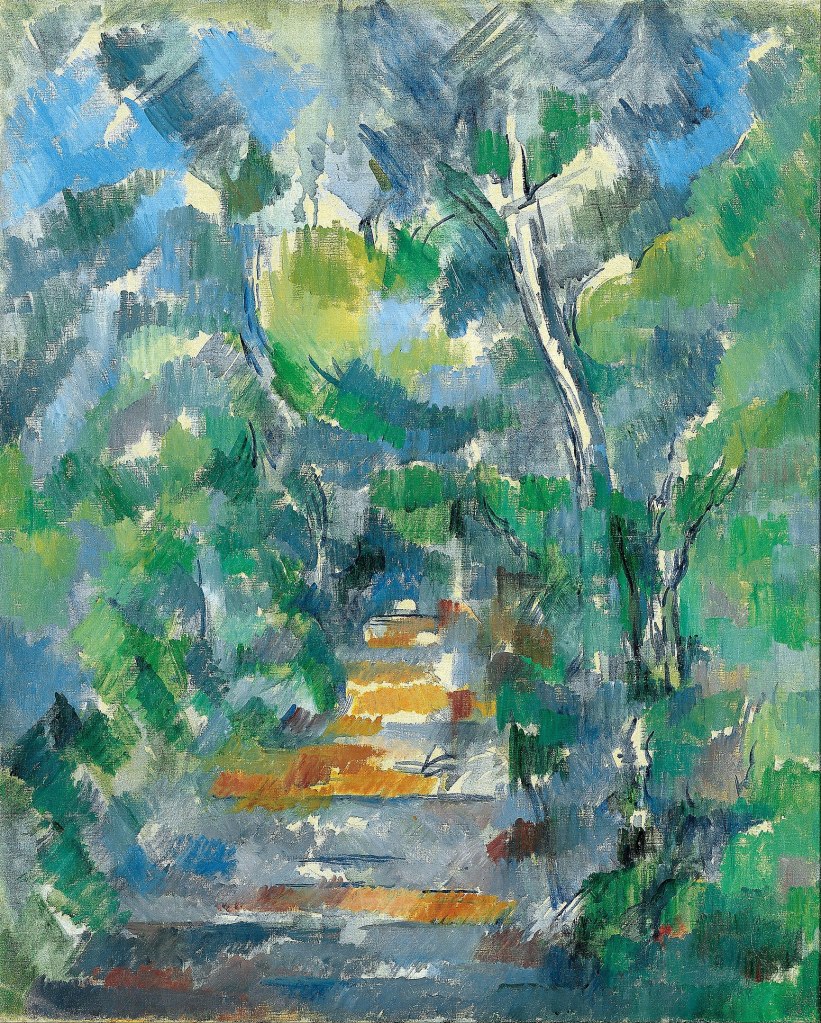
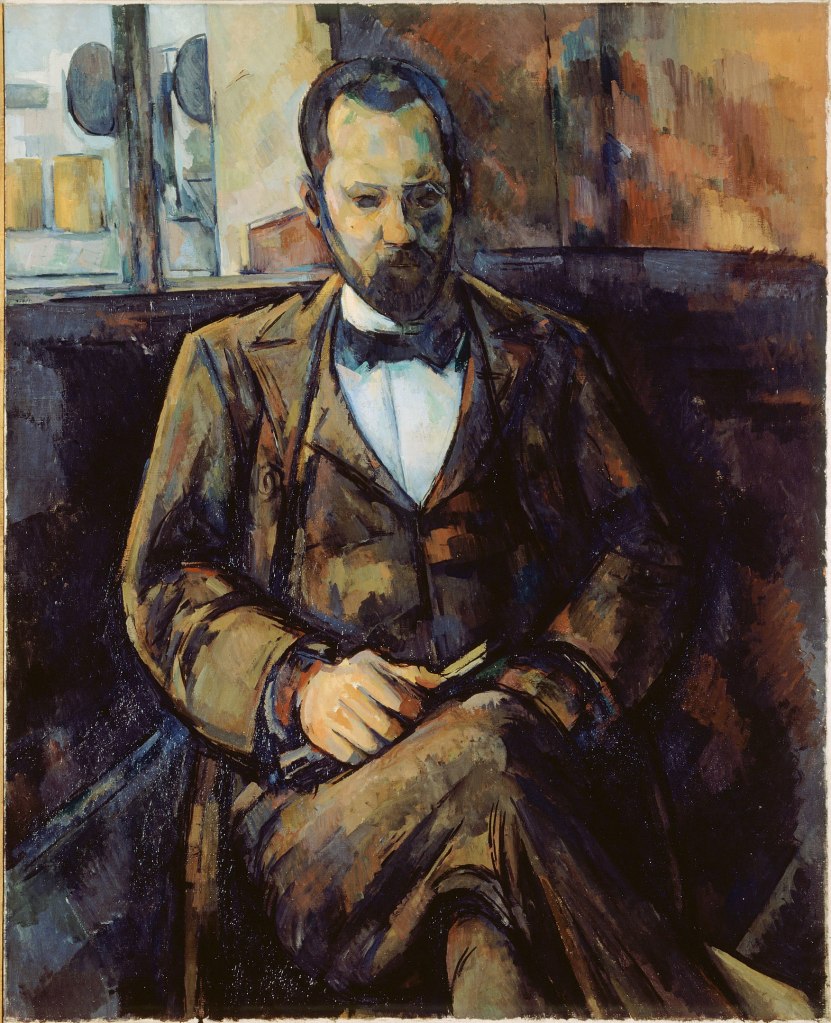


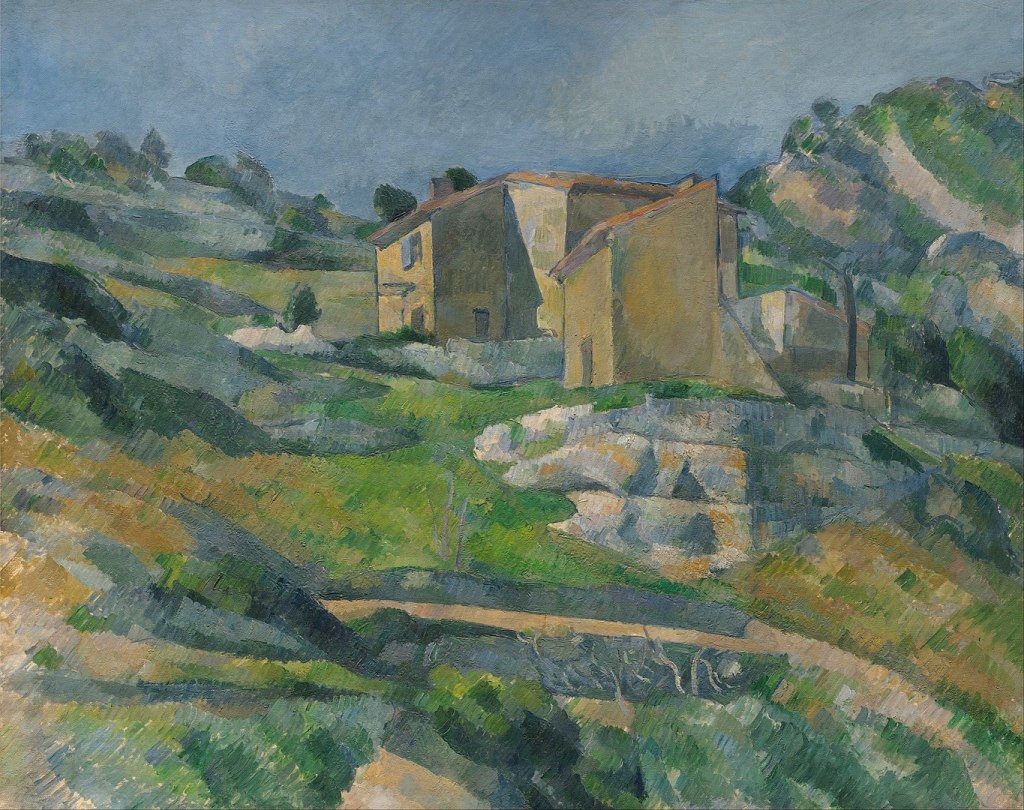
❦
“When I judge art, I take my painting and put it next to a God made object like a tree or flower. If it clashes, it is not art.”
❦

❦
“Art is a harmony parallel with nature.”
❦
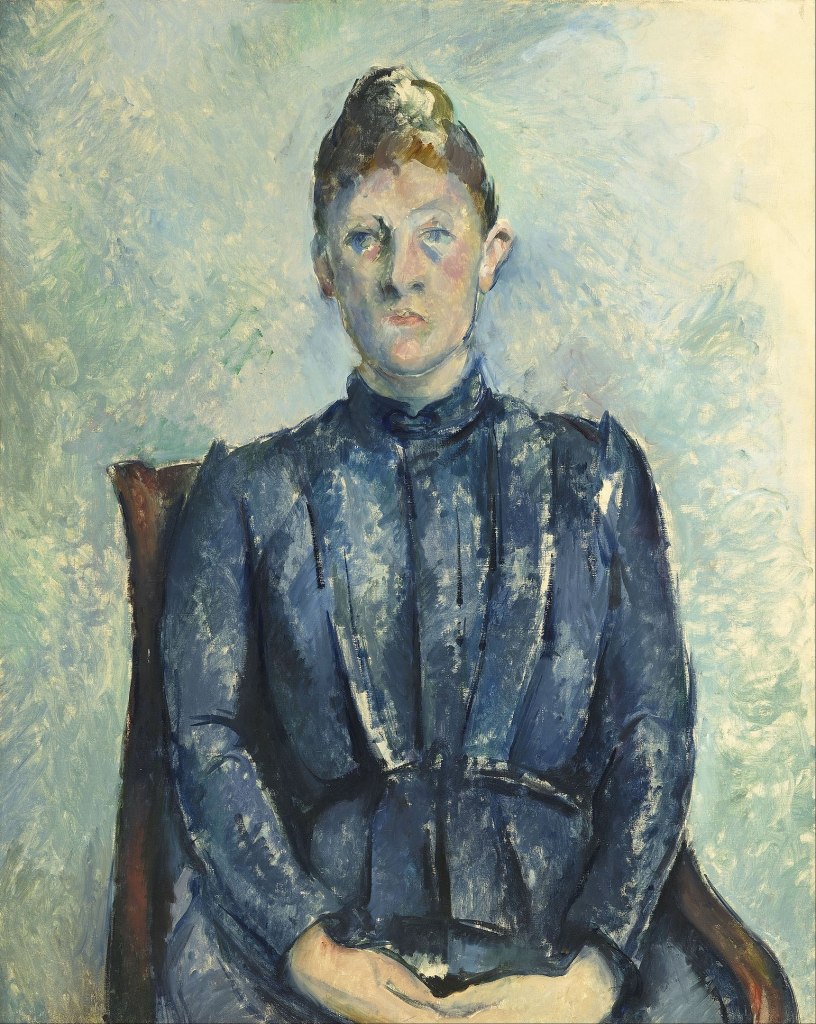

❦
“It’s so fine and yet so terrible to stand in front of a blank canvas.”
❦
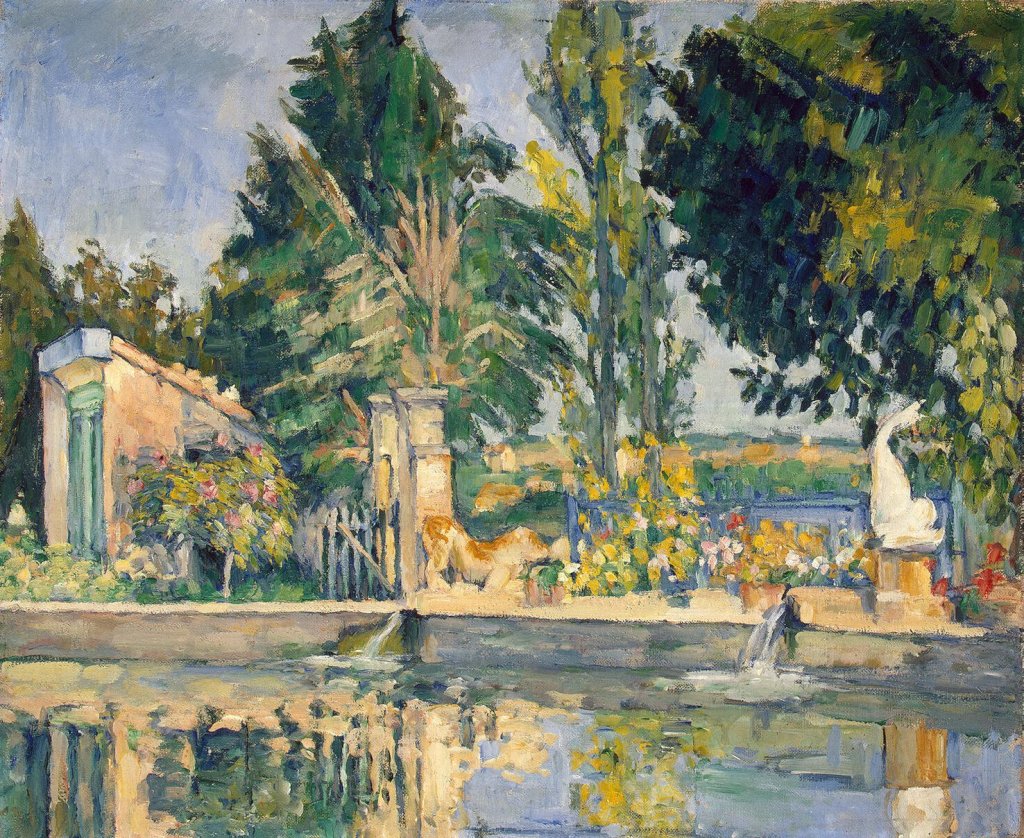

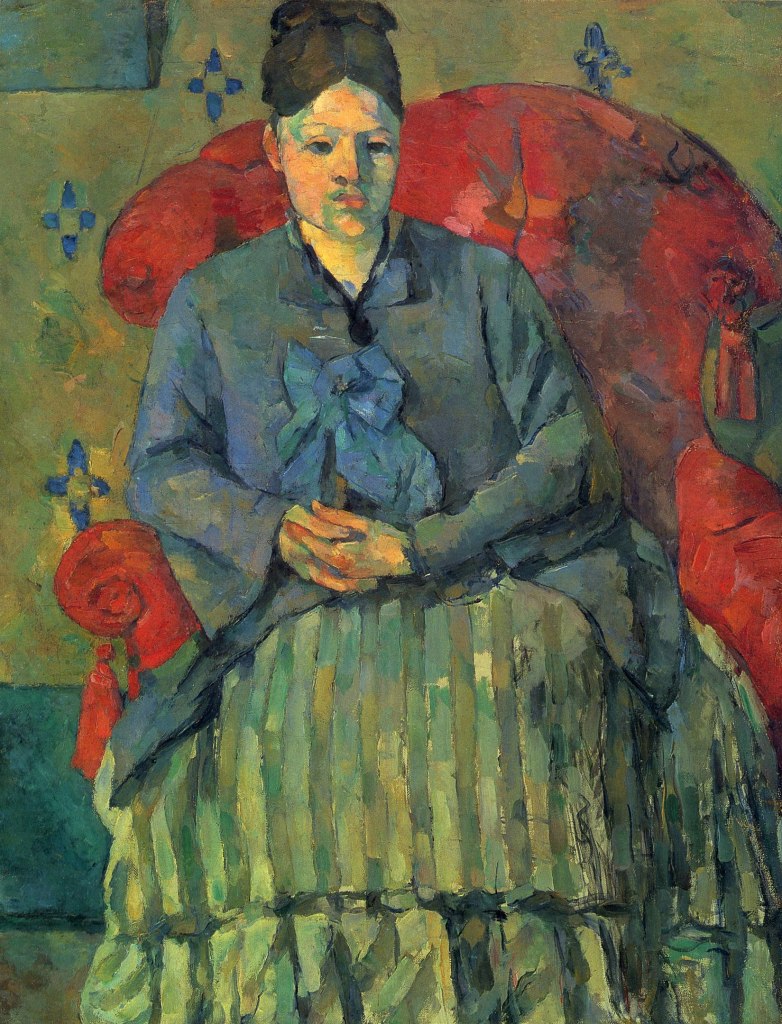
❦
“If isolation tempers the strong, it is the stumbling-block of the uncertain.”
❦
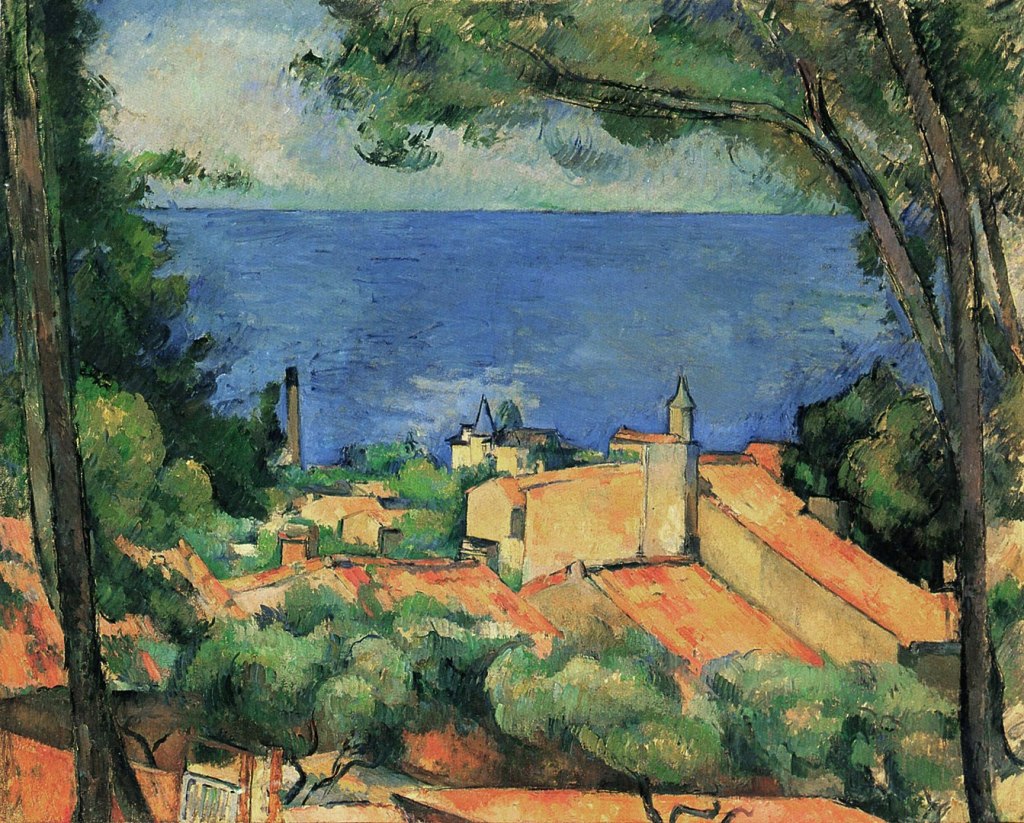
❦
“There are two things in the painter, the eye and the mind; each of them should aid the other.”
❦
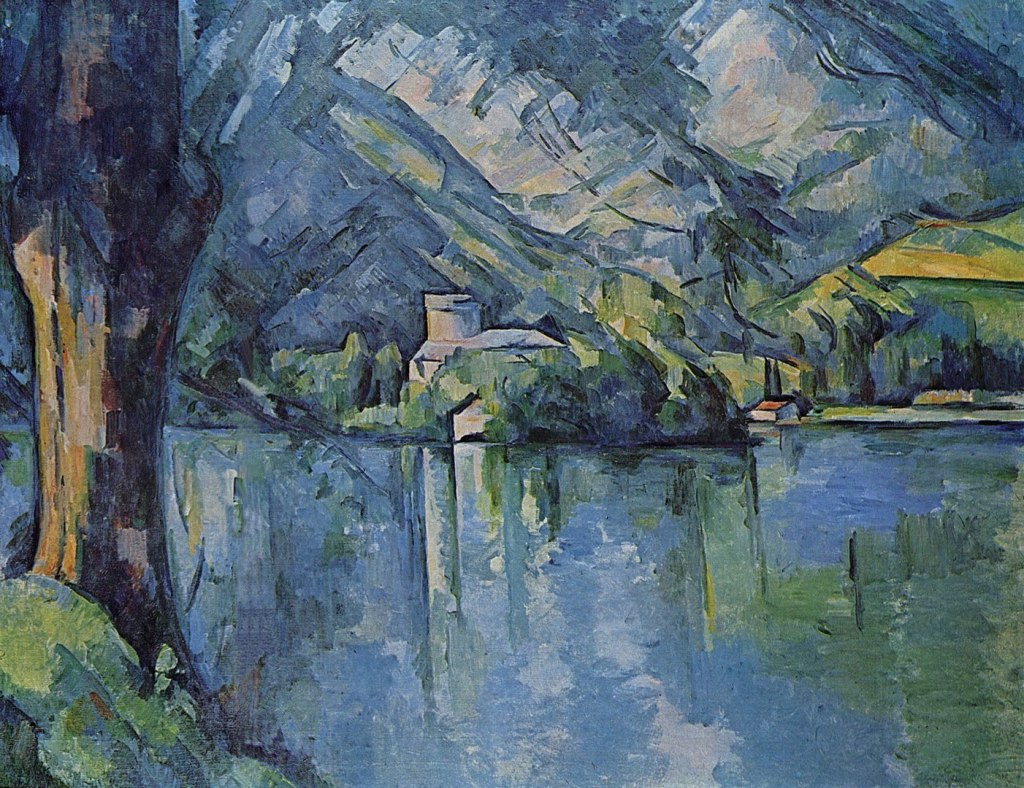
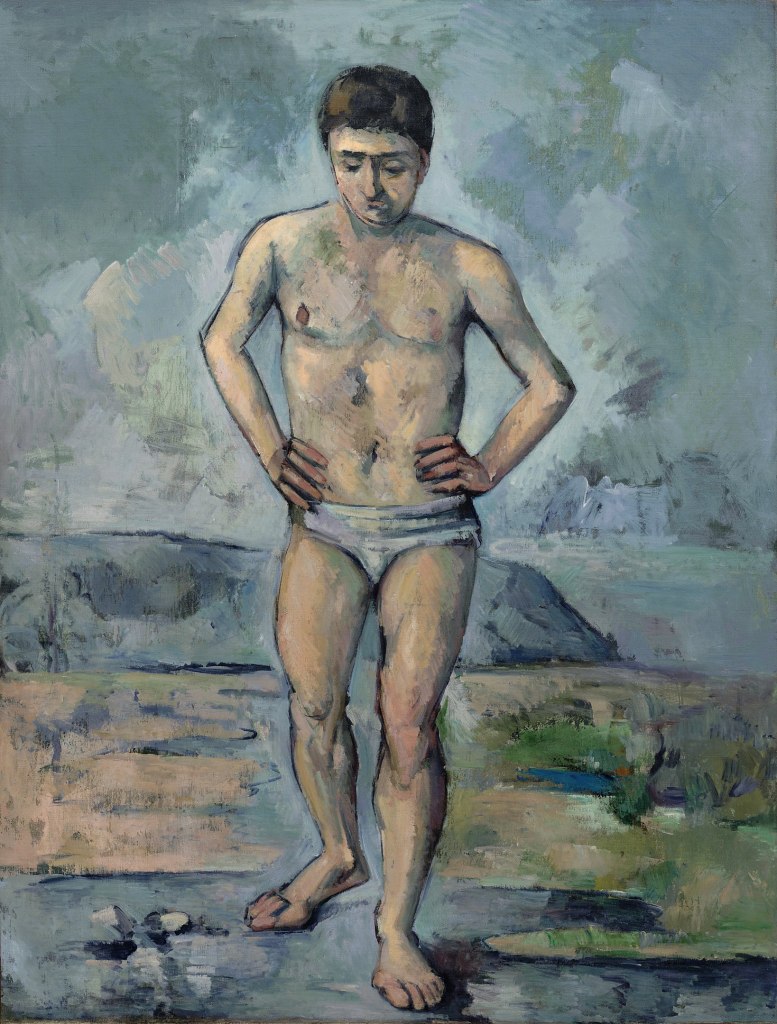



❦
“The world doesn’t understand me and I don’t understand the world, that’s why I’ve withdrawn from it.”
❦

❦
“A work of art which did not begin in emotion is not art.”
❦


❦
“The awareness of our own strength makes us modest.”
❦

❦
“Painting from nature is not copying the object; it is realizing one’s sensations.”
❦

❦
“An art which isn’t based on feeling isn’t an art at all.”
❦

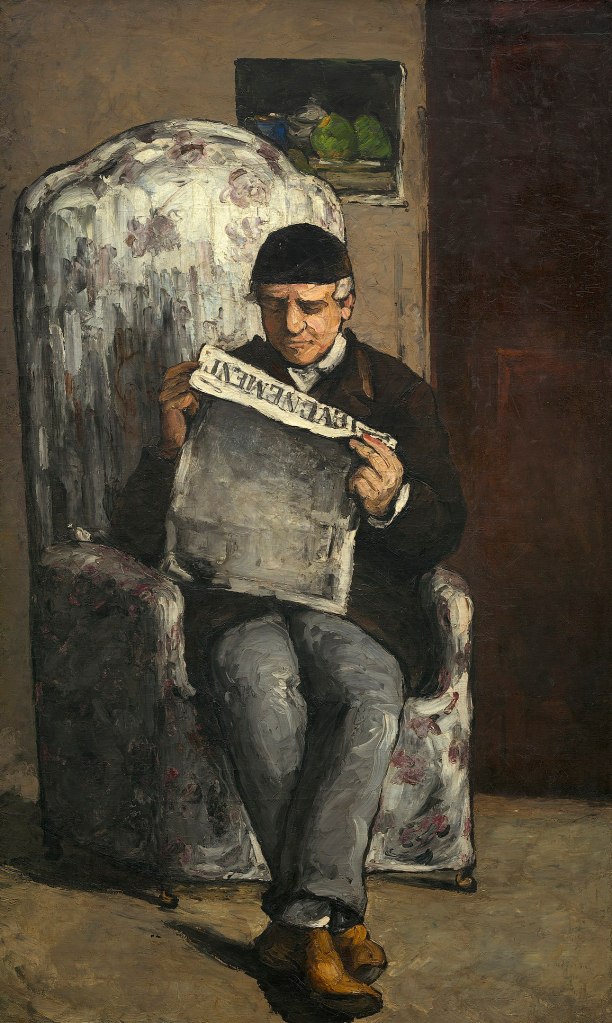
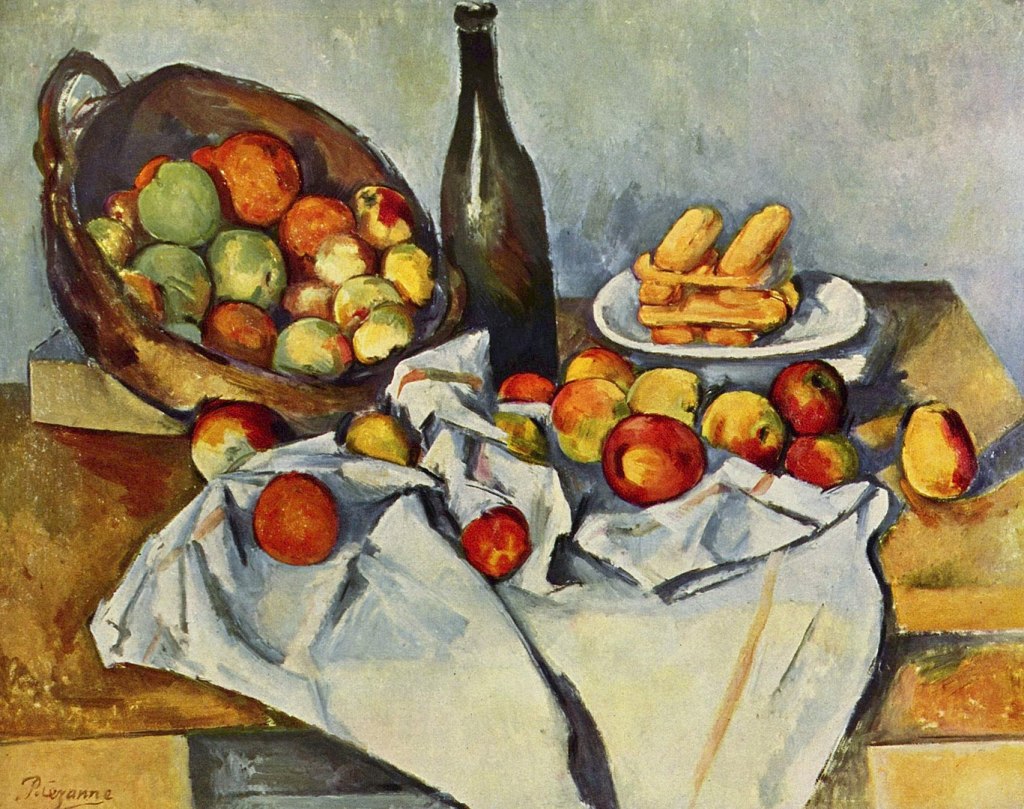
❦
“With an apple I will astonish Paris.”
❦
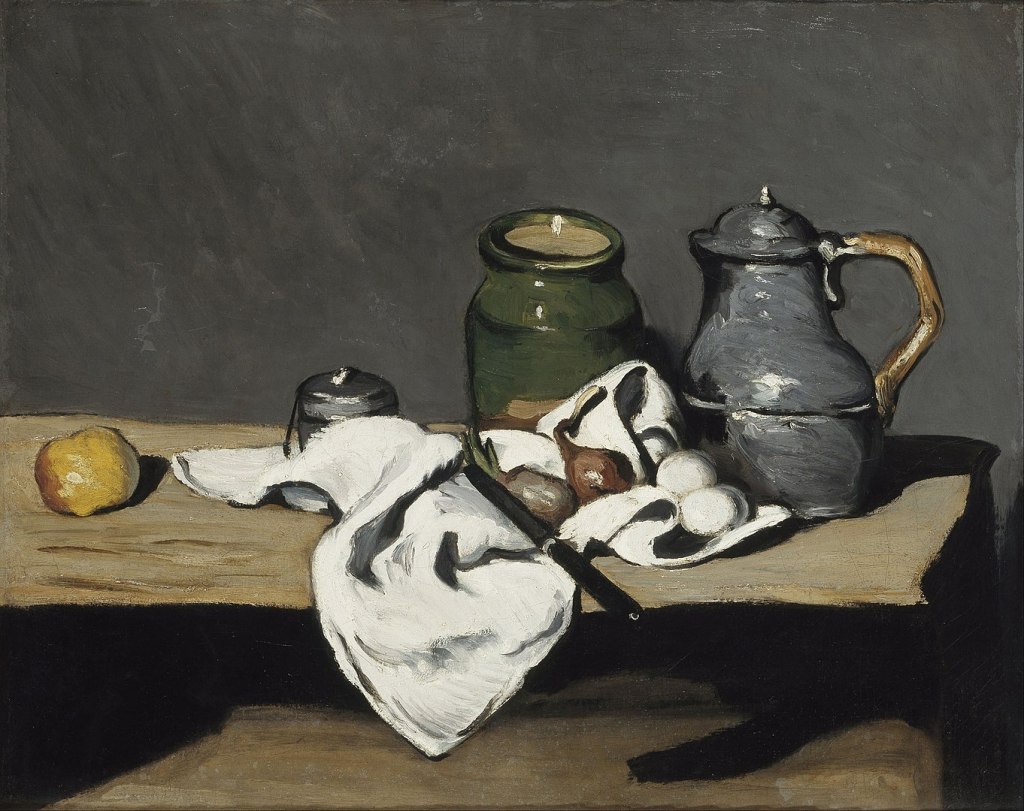
❦
“Keep good company – that is, go to the Louvre.”
❦
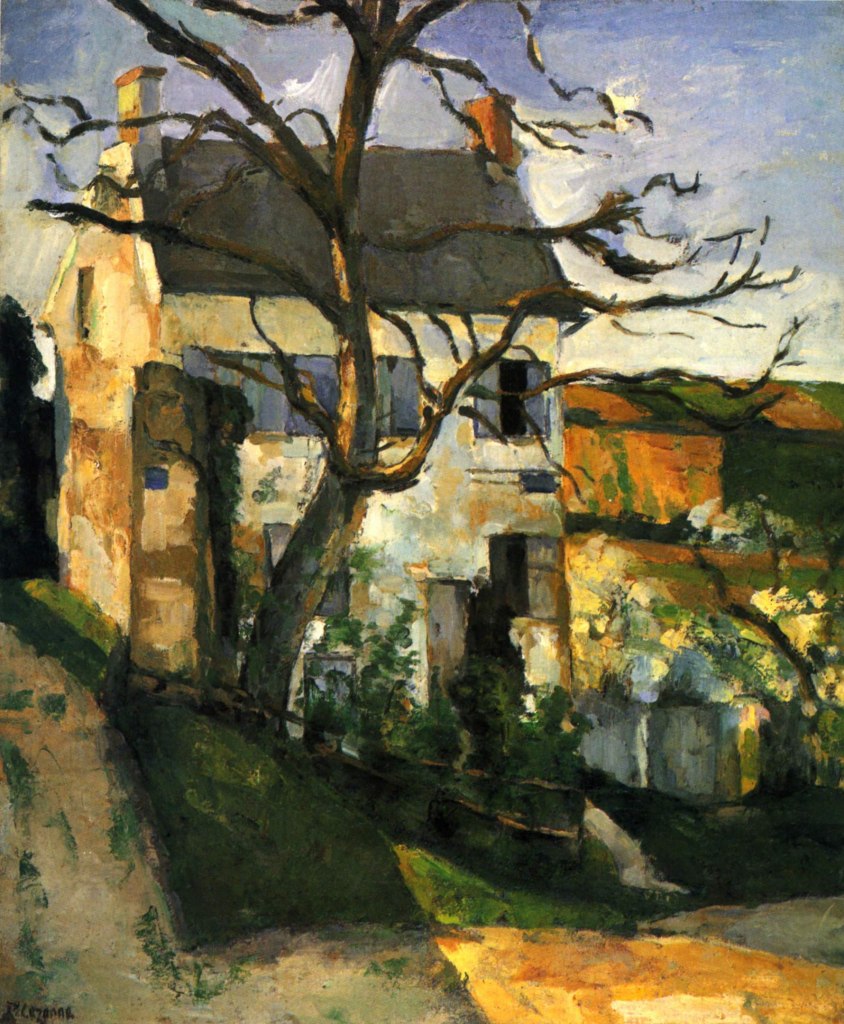
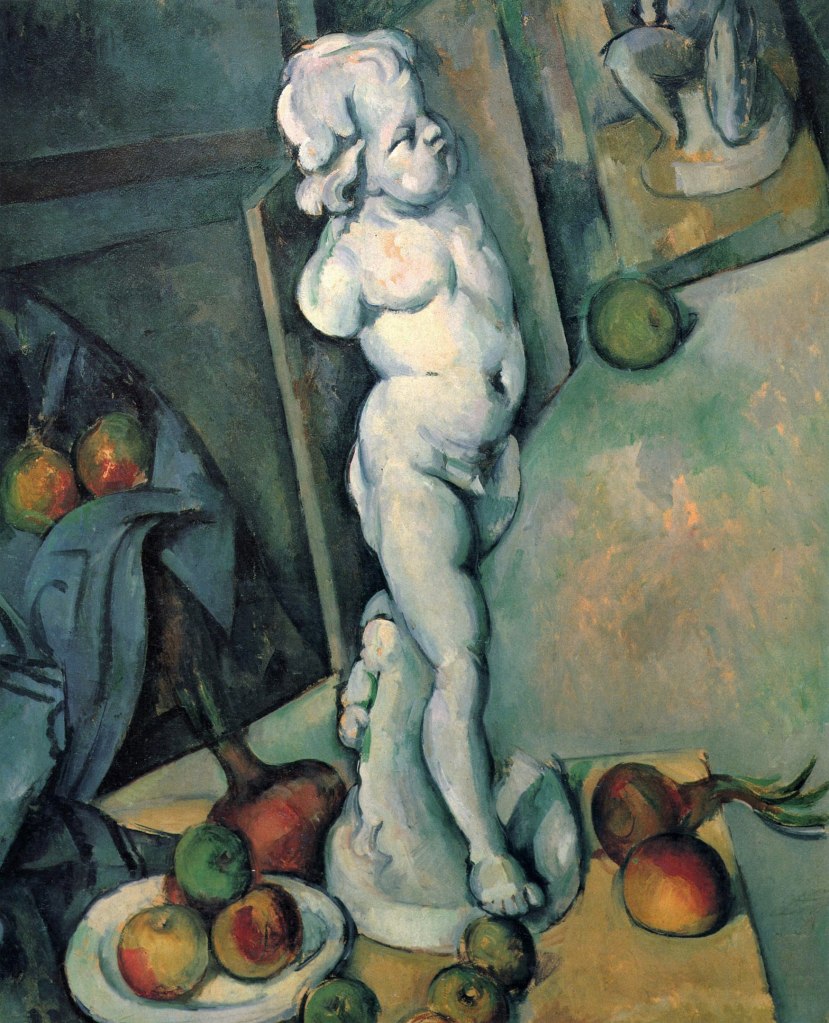
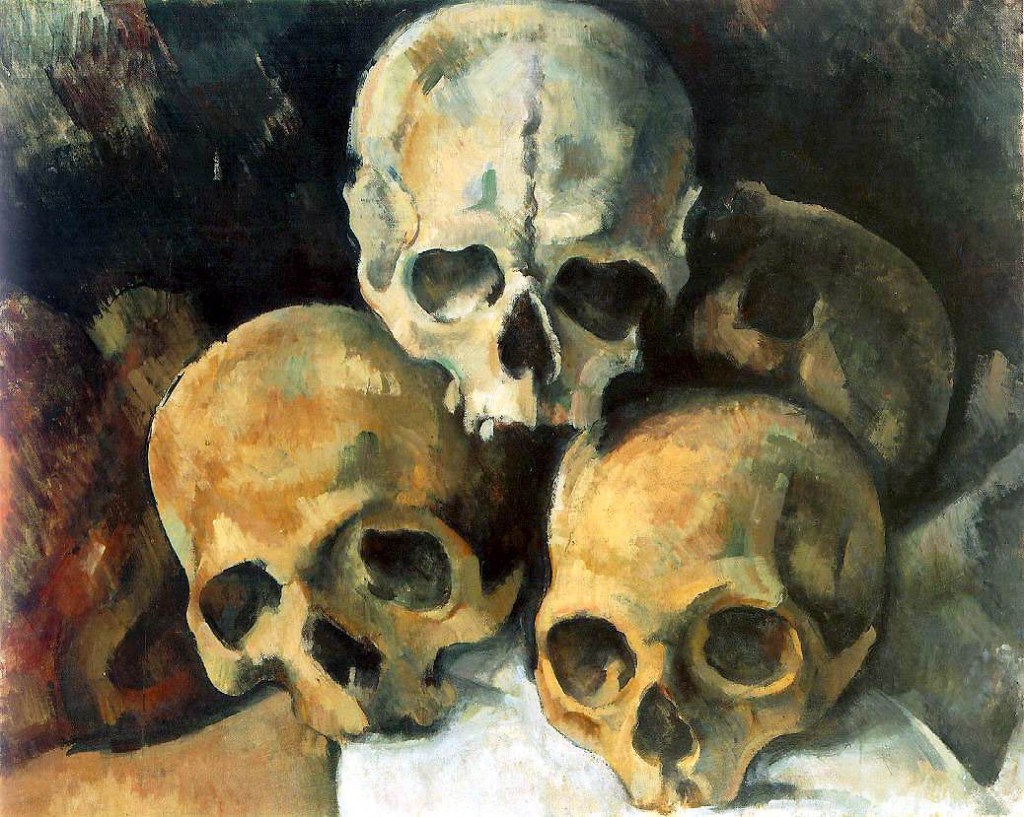
❦
“The most seductive thing about art is the personality of the artist himself.”
❦

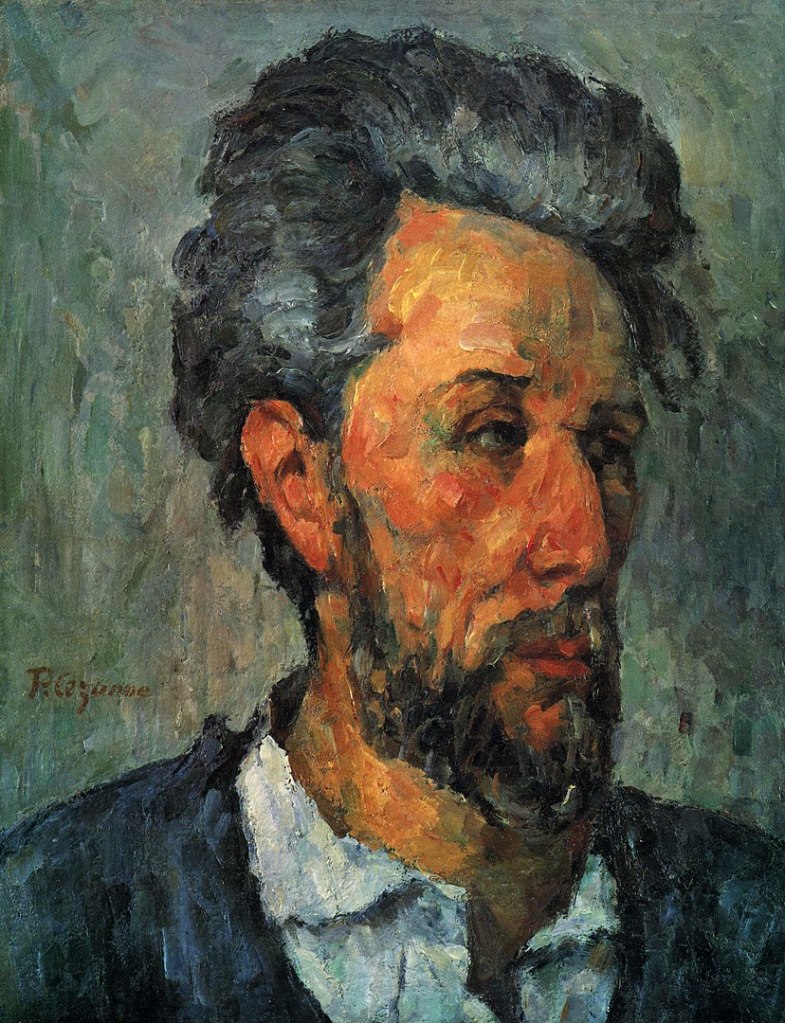
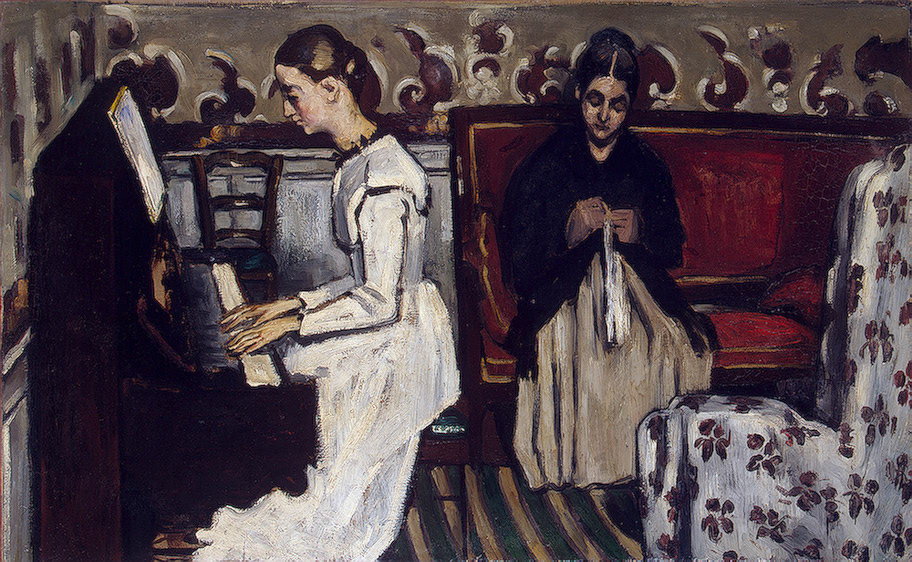
❦
“For an Impressionist to paint from nature is not to paint the subject, but to realize sensations.”
❦
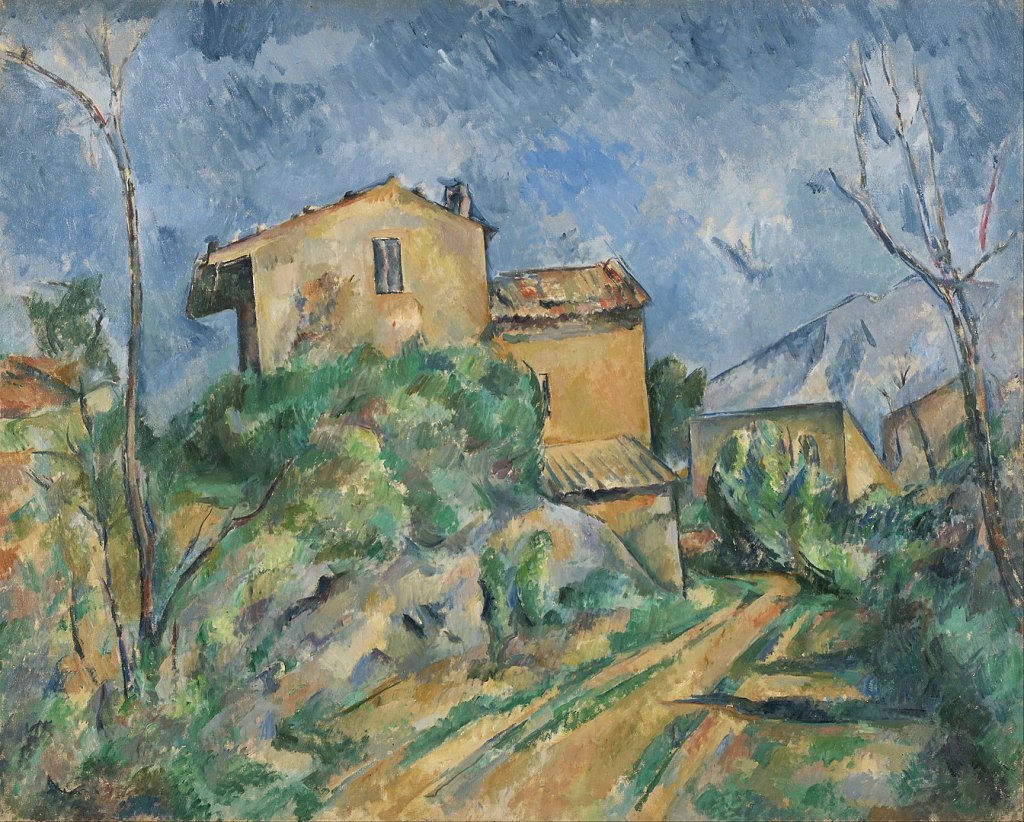
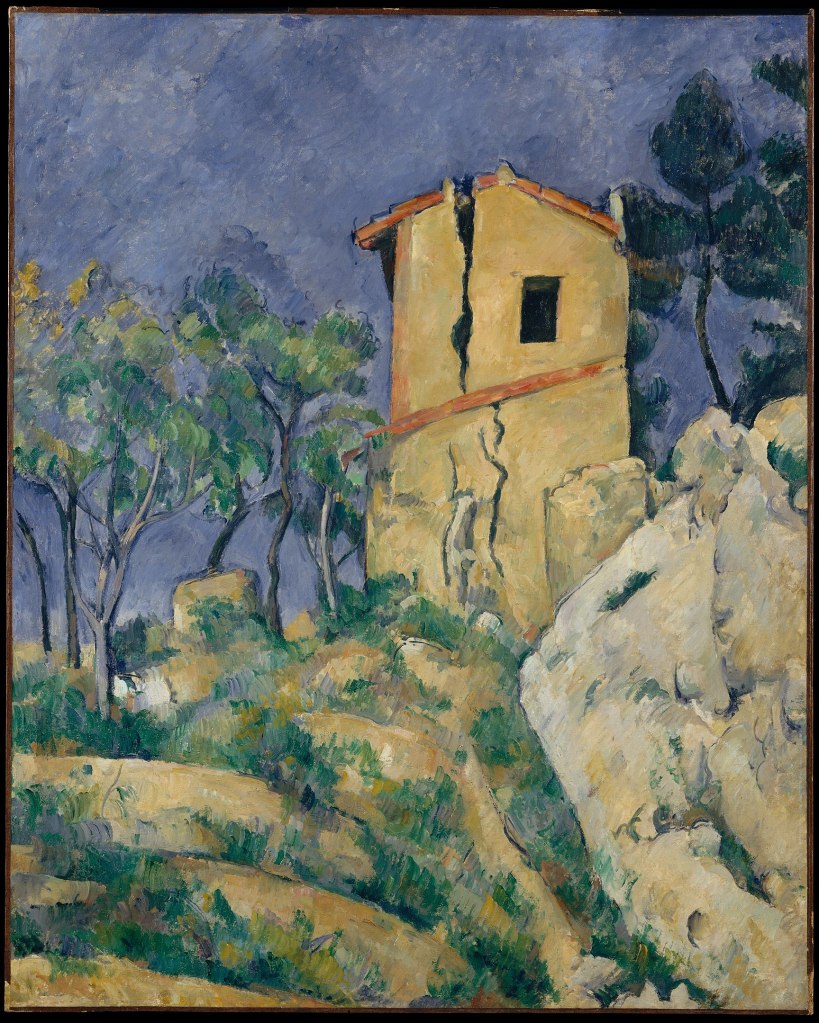
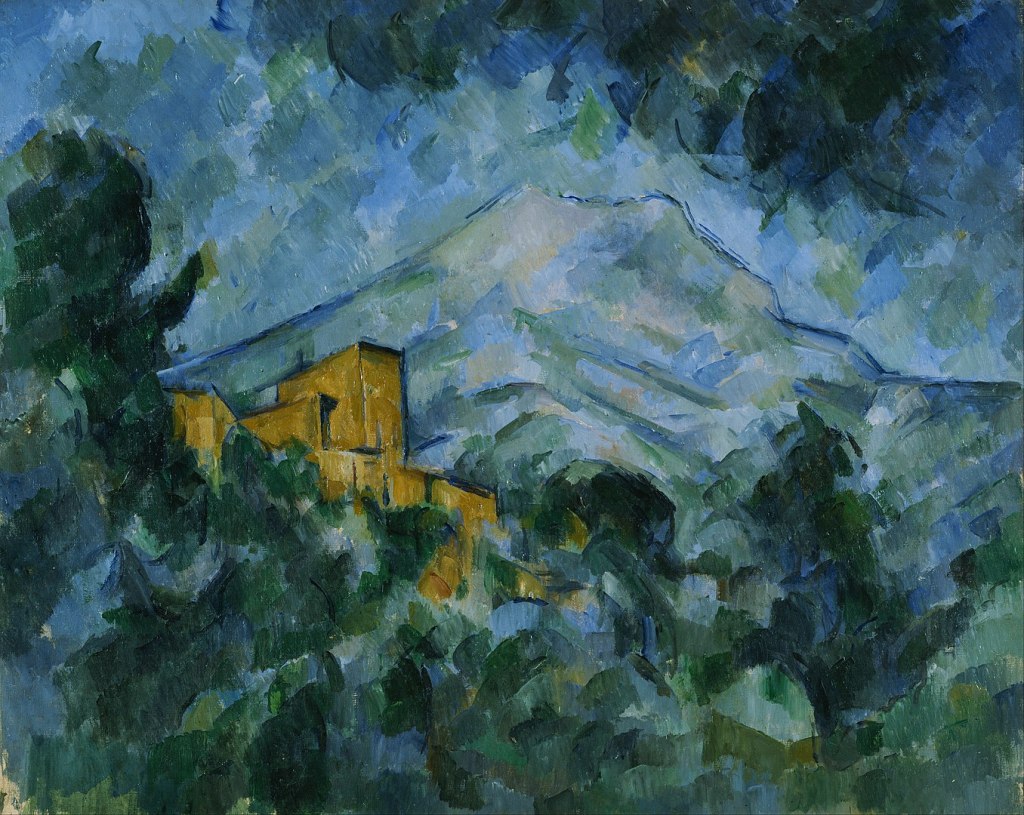
❦
“Painting is damned difficult – you always think you’ve got it, but you haven’t.”
❦

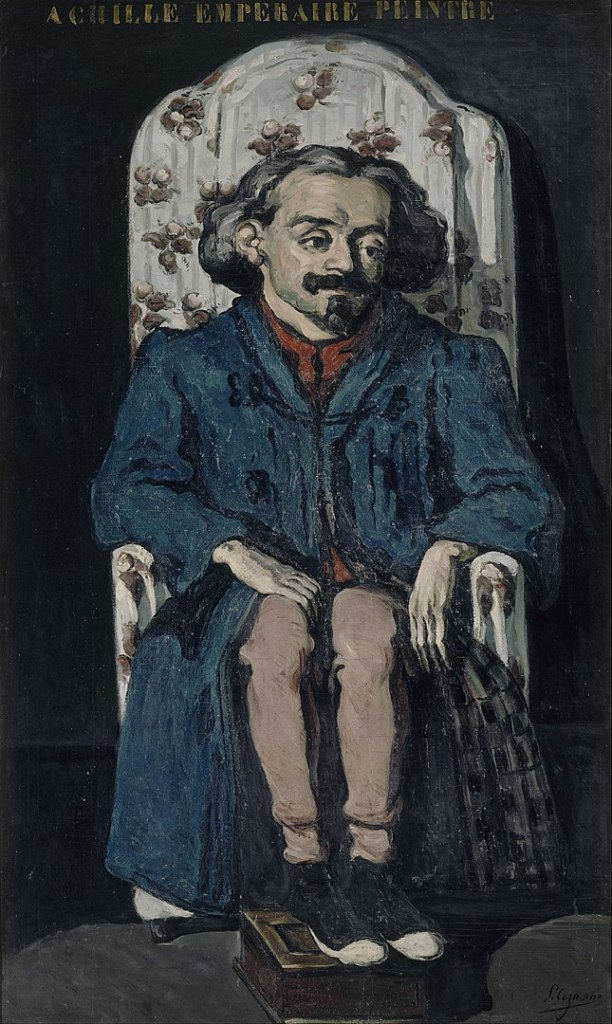
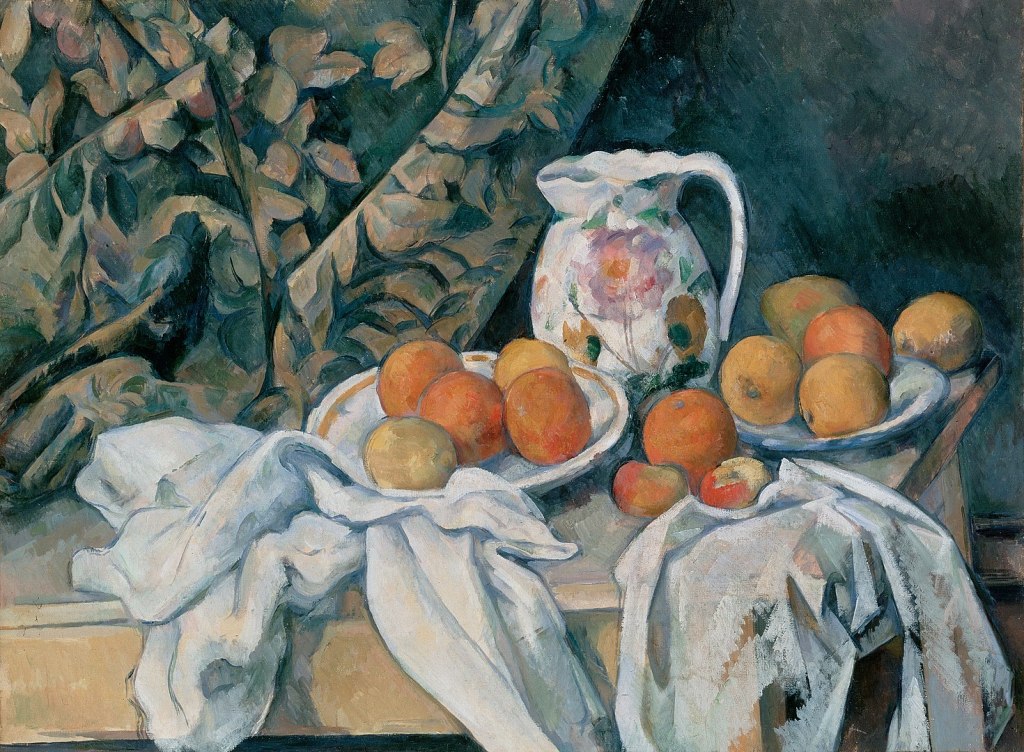
❦
“Don’t be an art critic. Paint. There lies salvation..”
❦

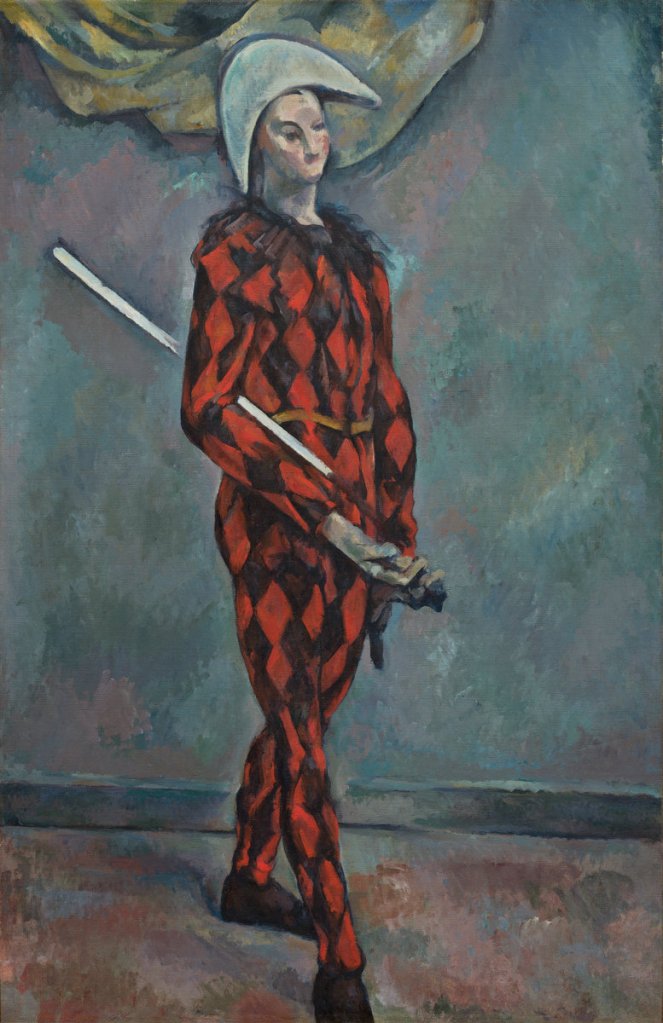

❦
“Shadow is a colour as light is, but less brilliant; light and shadow are only the relation of two tones.”
❦


❦
“Here, on the river’s verge, I could be busy for months without changing my place, simply leaning a little more to right or left.”
❦

❦
“I must be more sensible and realize that at my age, illusions are hardly permitted and they will always destroy me.”
❦


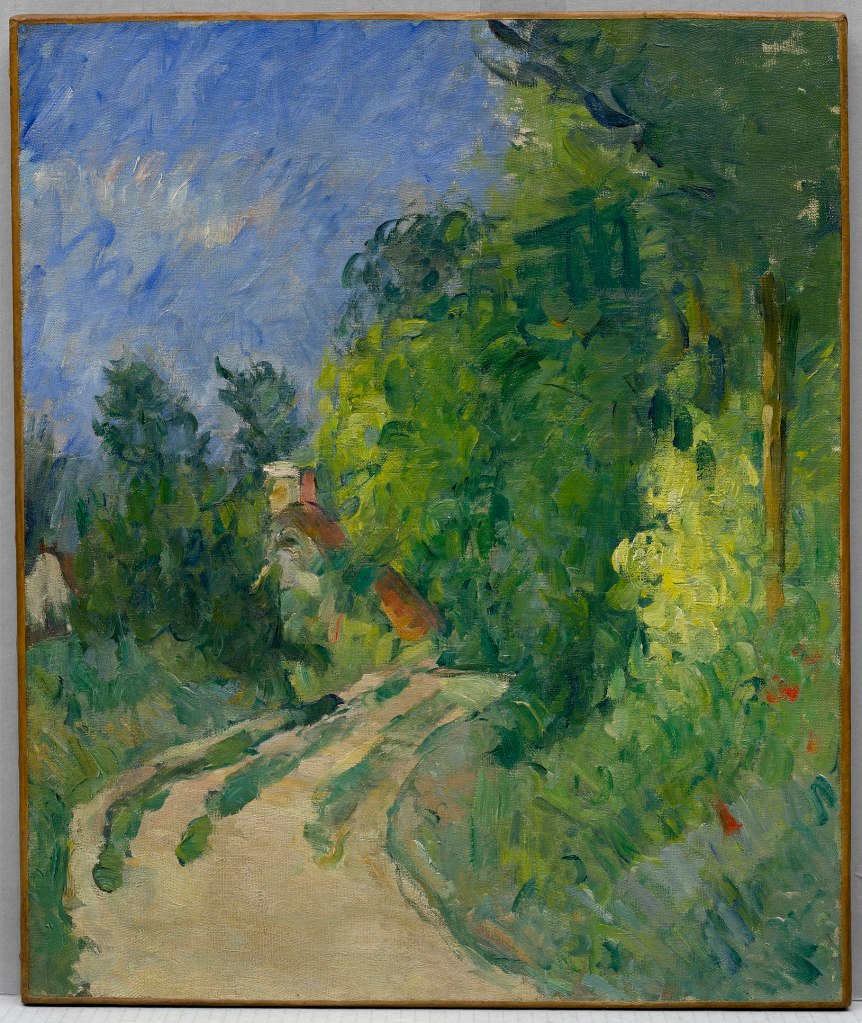

❦
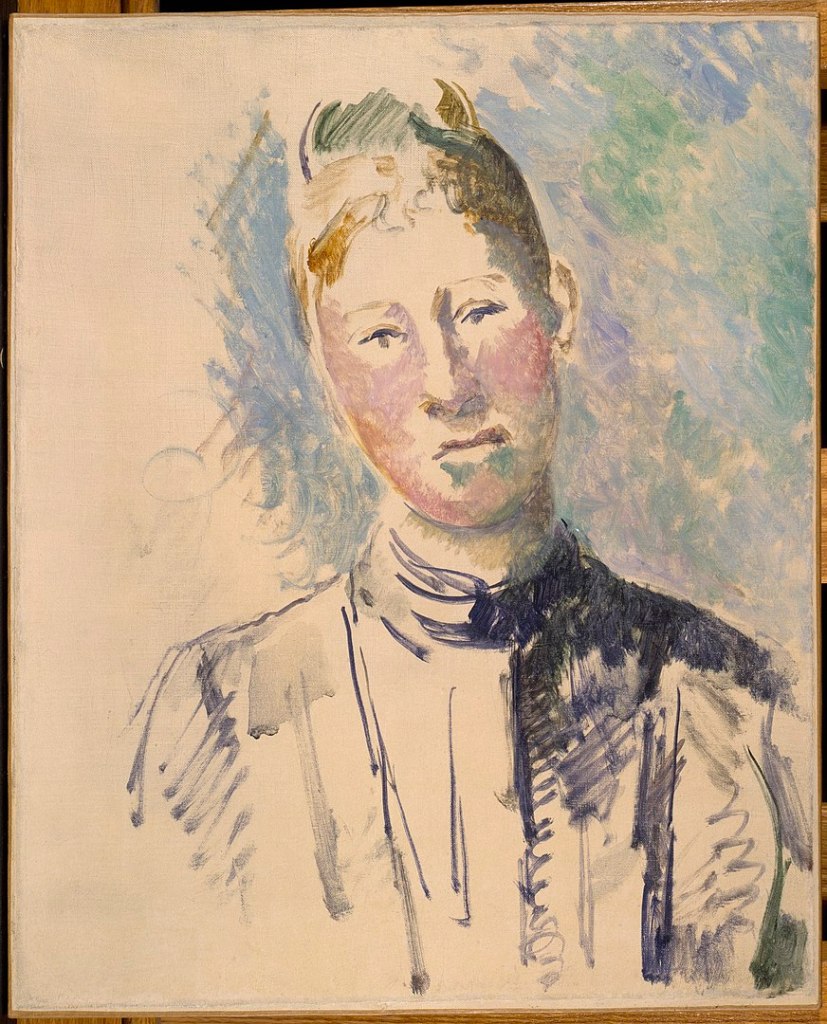
Madame Cézanne 
Study of a Skull 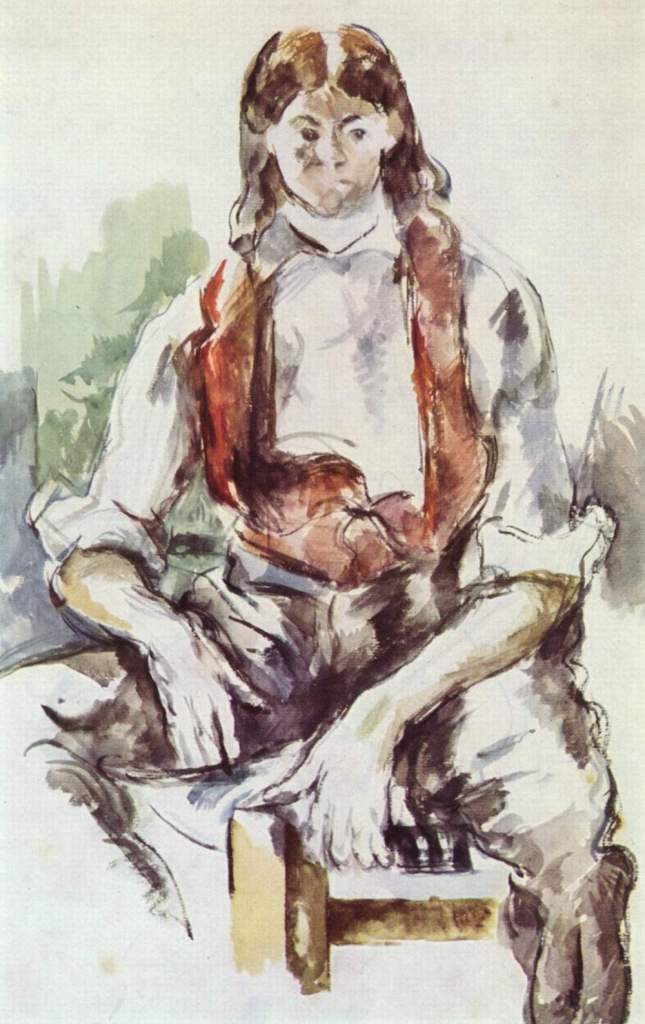
Boy with Red Vest 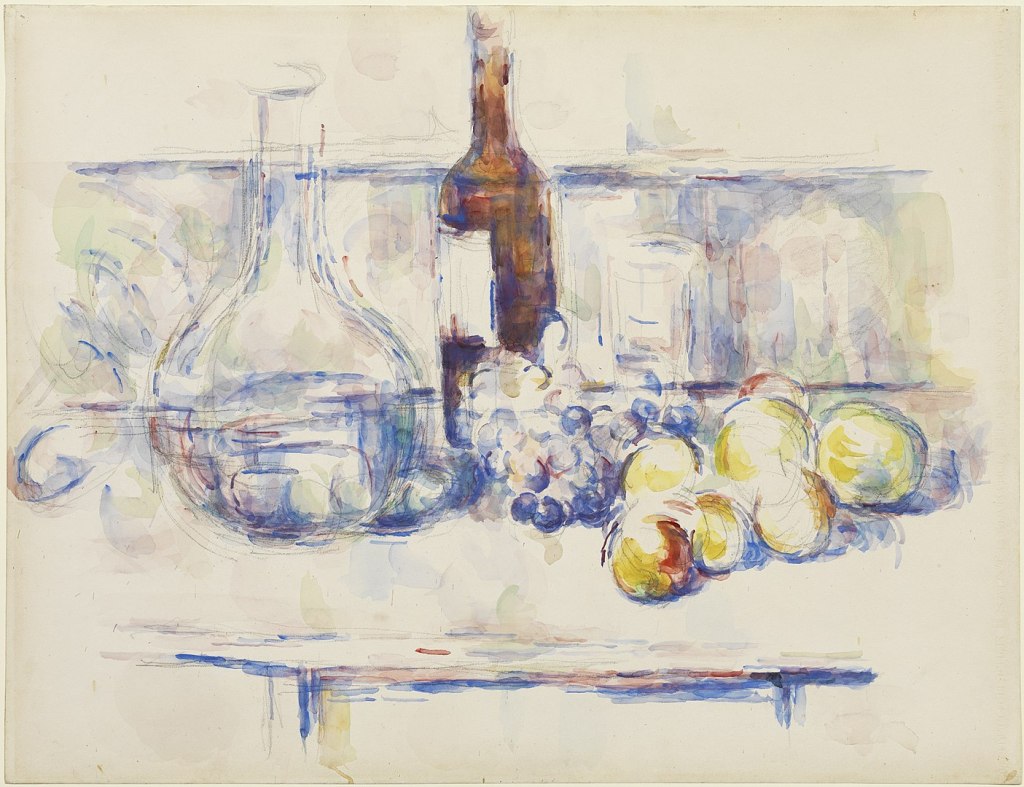
Still Life with Carafe, Bottle, and Fruit 
Mont Sainte Victoire – view from Lauves 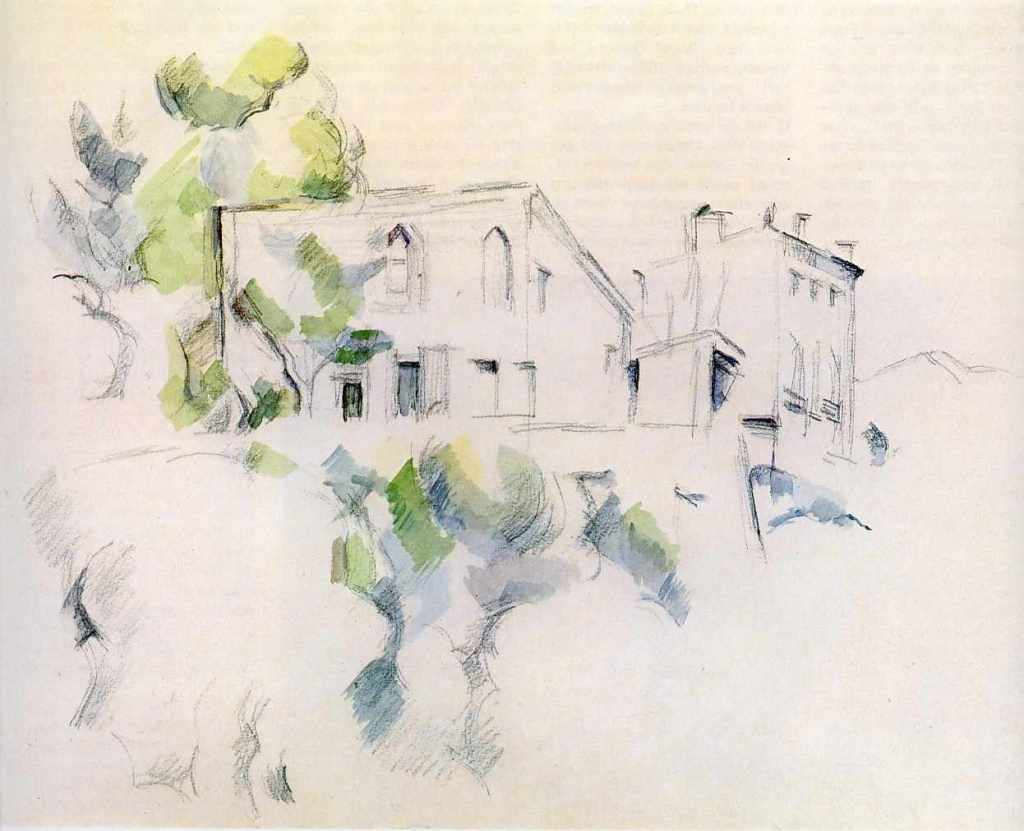
Sketch of a house 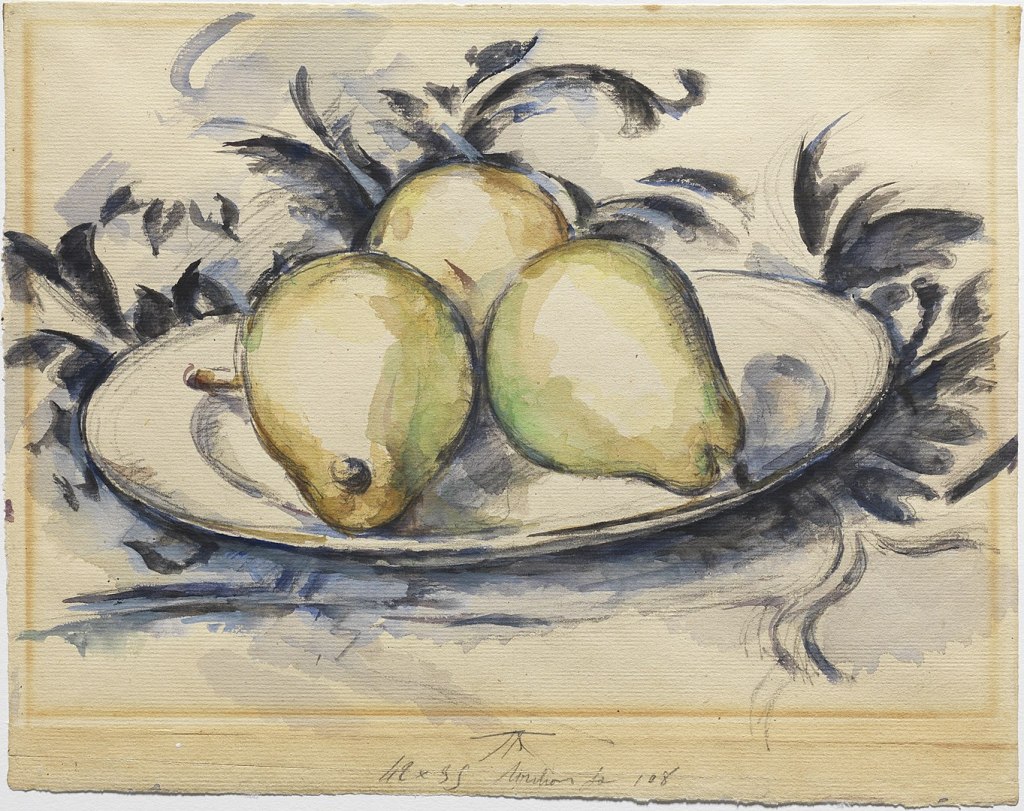
Three Pears
❦



❦
Self Portraits
❦
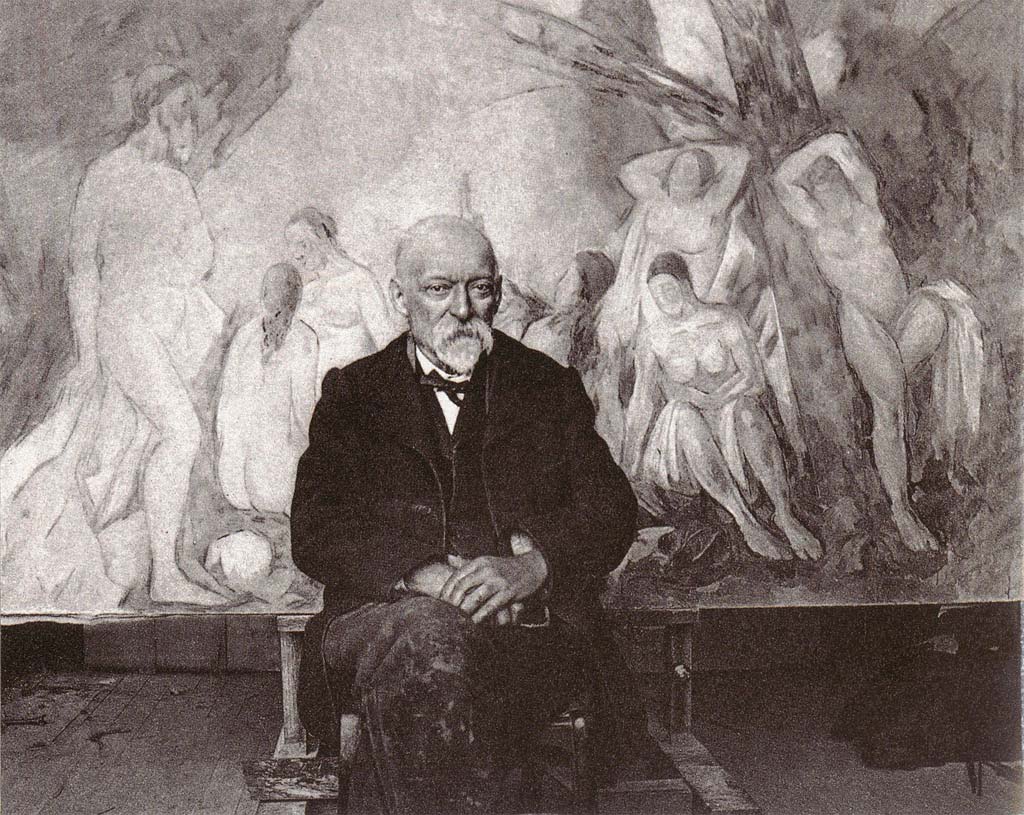
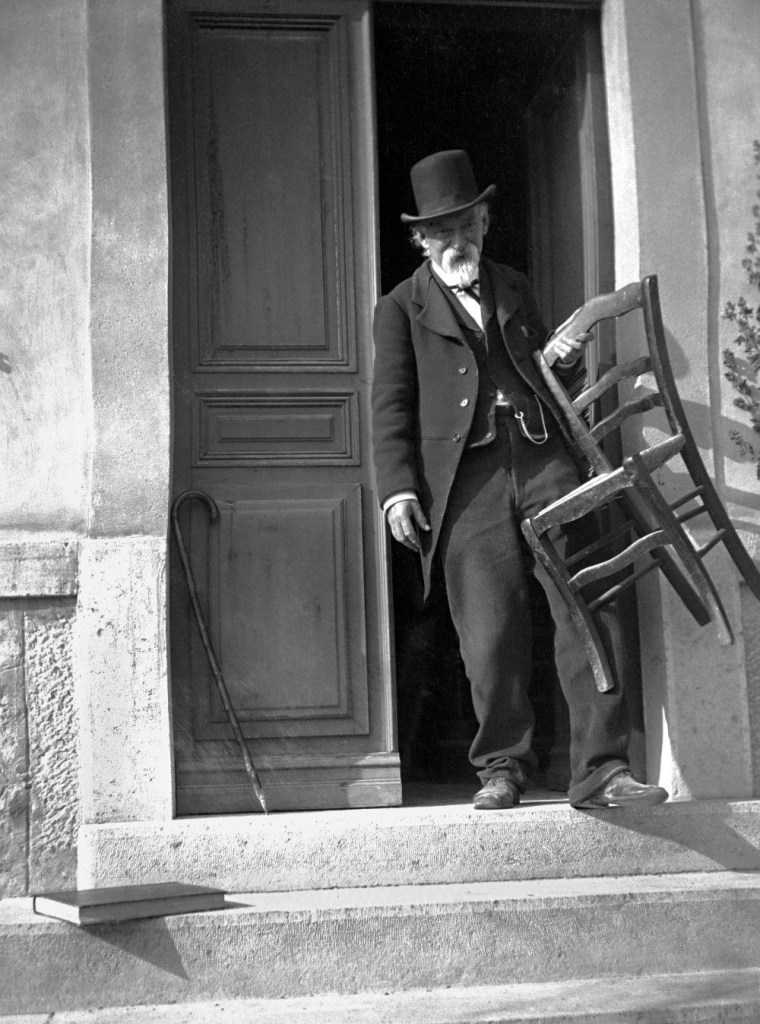
❦

❦
French Romantic composer and pianist
Alexis-Emmanuel Chabrier [1841-1894]
was born yesterday,
January 18, 1841
so we listen to his
Pièces pittoresques
[arranged for orchestra]
Performed by Orchestre du Capitole de Toulouse
conducted by Michel Plasson
Arranged by the composer in 1888 as Suite Pastorale (in the order 6, 7, 4 & 10.)
Ravel’s orchestration of the Menuet pompeux was completed in 1918.

❦
I. No. 4. Sous bois
II. No. 6. Idylle
III. No. 7. Danse villageoise
IV. No. 9. Menuet pompeux (orch. Ravel)
V. No. 10. Scherzo-Valse.
❦
For more information on Cézanne:
https://www.metmuseum.org/toah/hd/pcez/hd_pcez.htm
https://www.nationalgallery.org.uk/artists/paul-cezanne
https://www.moma.org/artists/1053
https://www.tate.org.uk/art/artists/paul-cezanne-879
https://www.musee-orangerie.fr/en/artist/paul-cezanne
https://en.wikipedia.org/wiki/Paul_C%C3%A9zanne
https://commons.wikimedia.org/wiki/Paul_C%C3%A9zanne

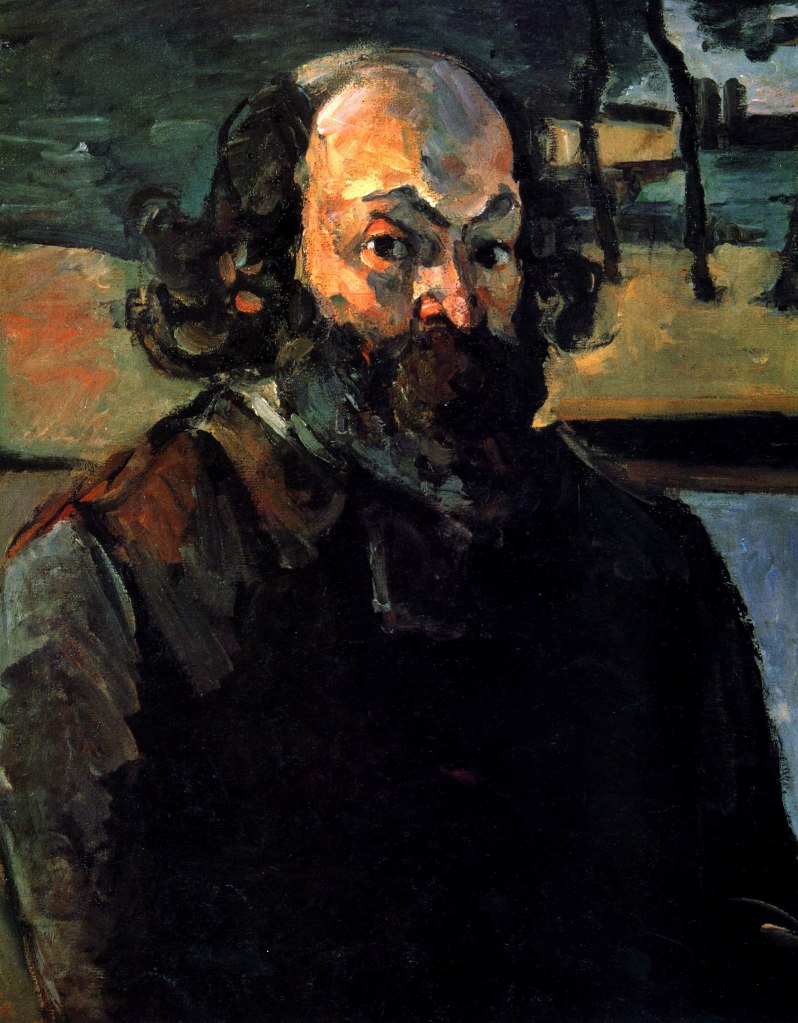
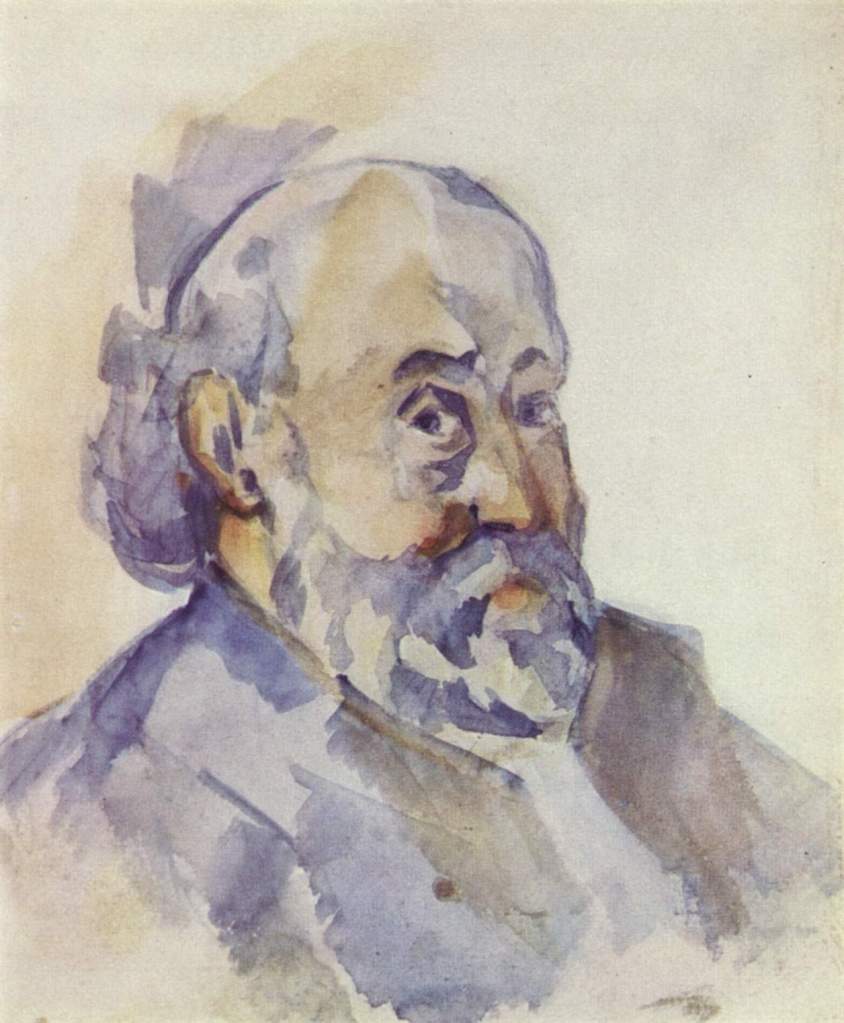
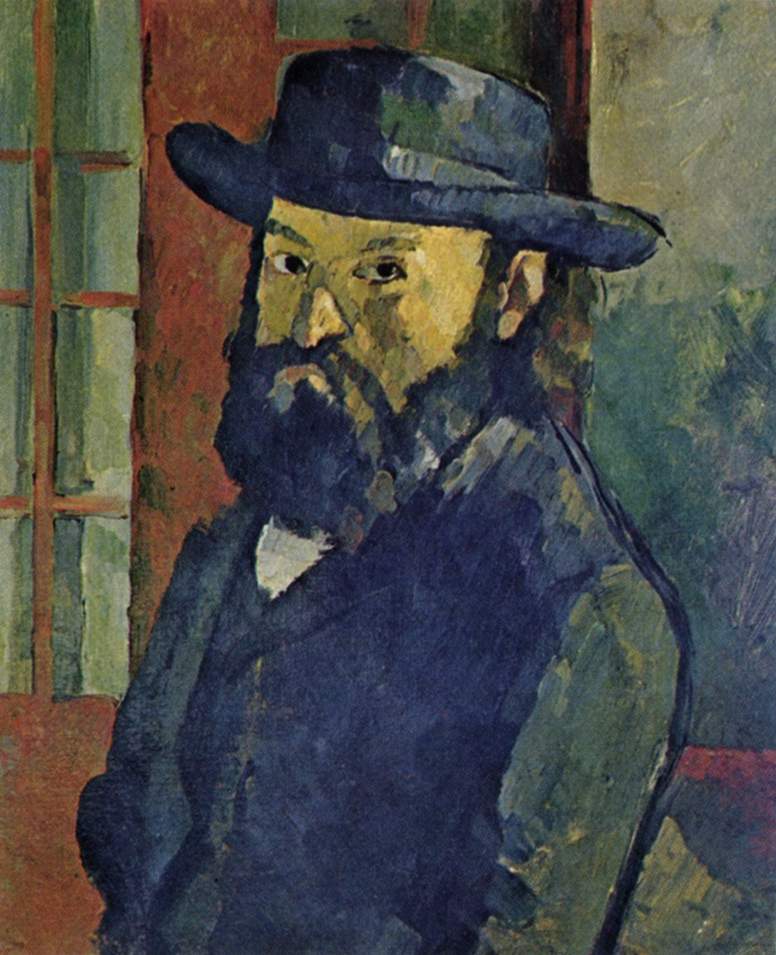
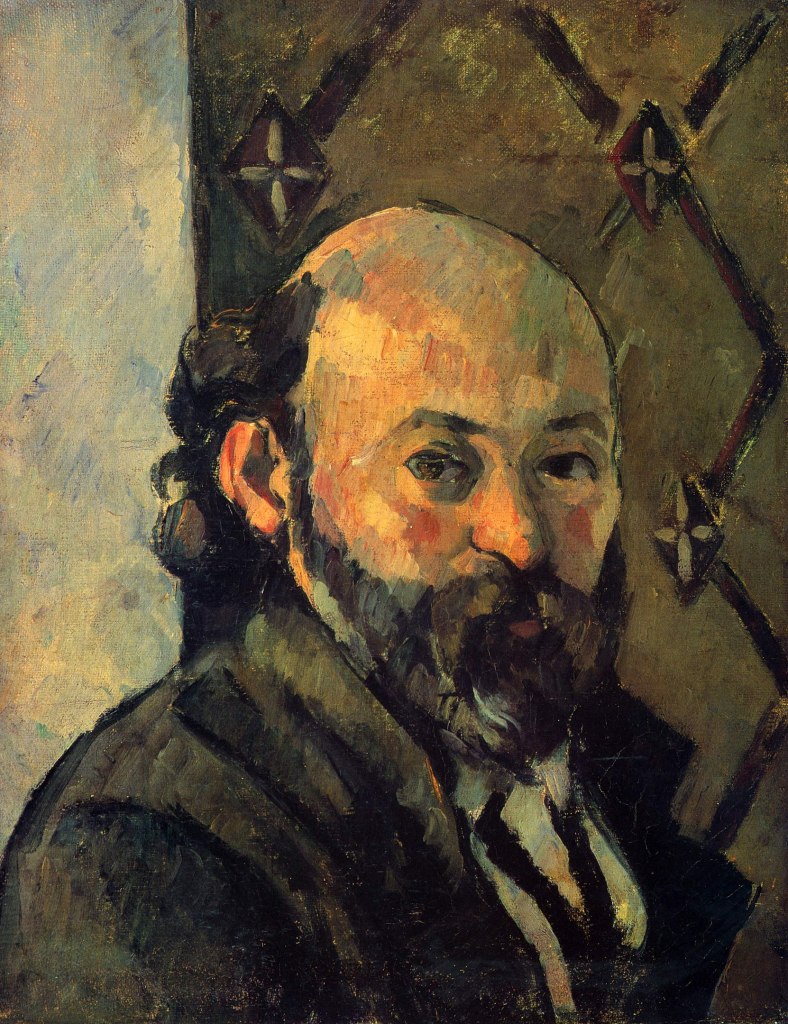


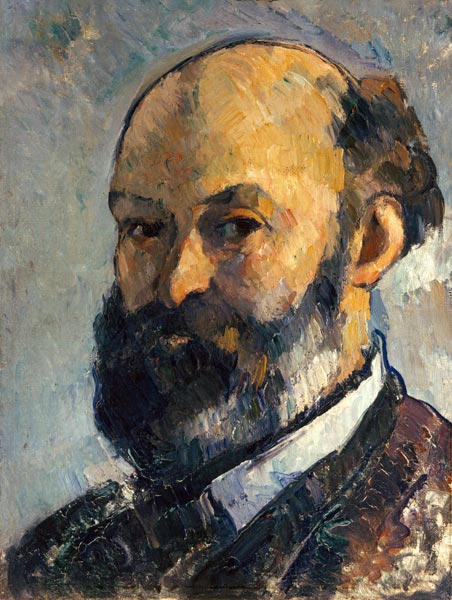

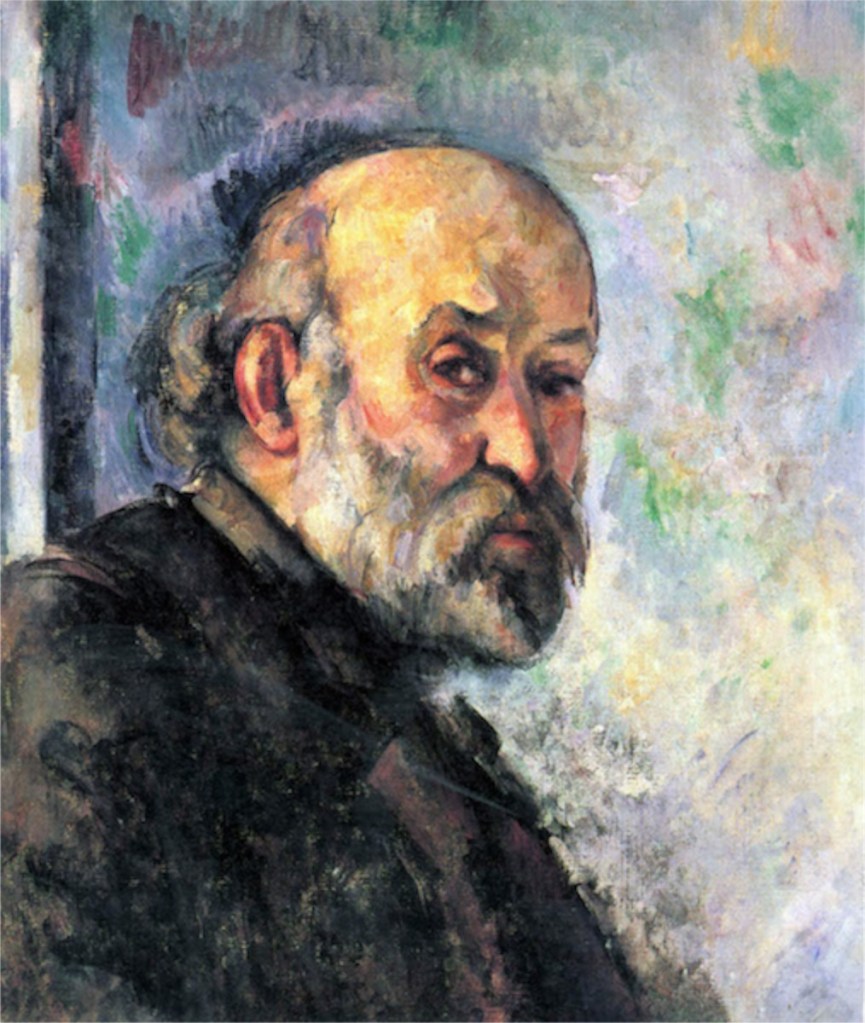
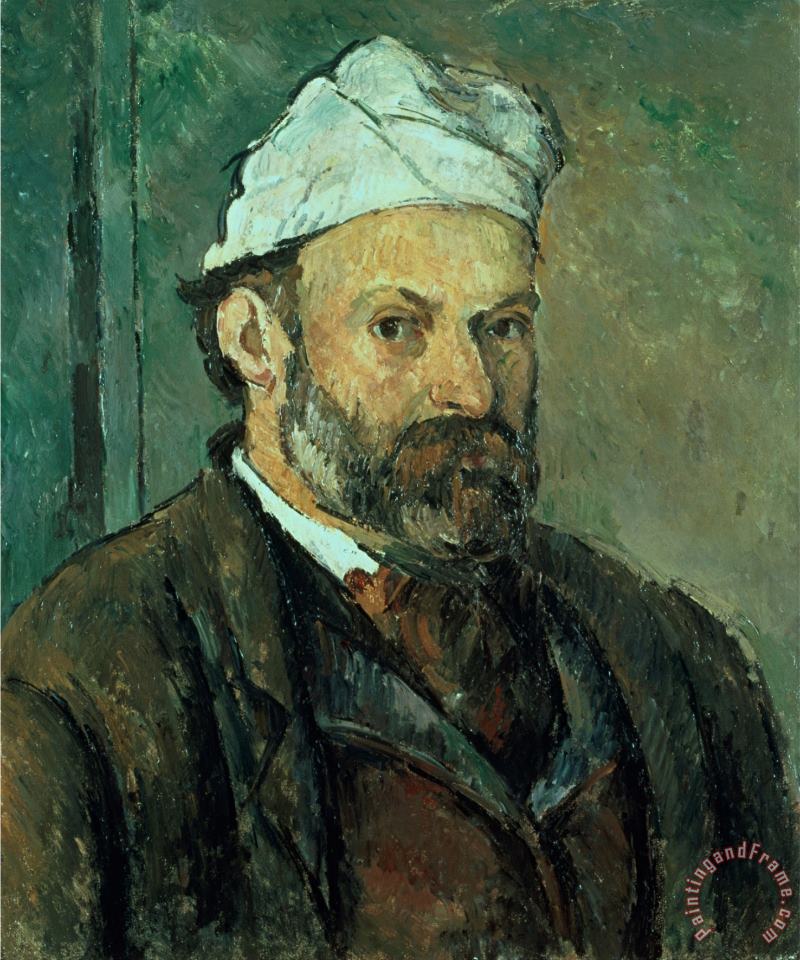
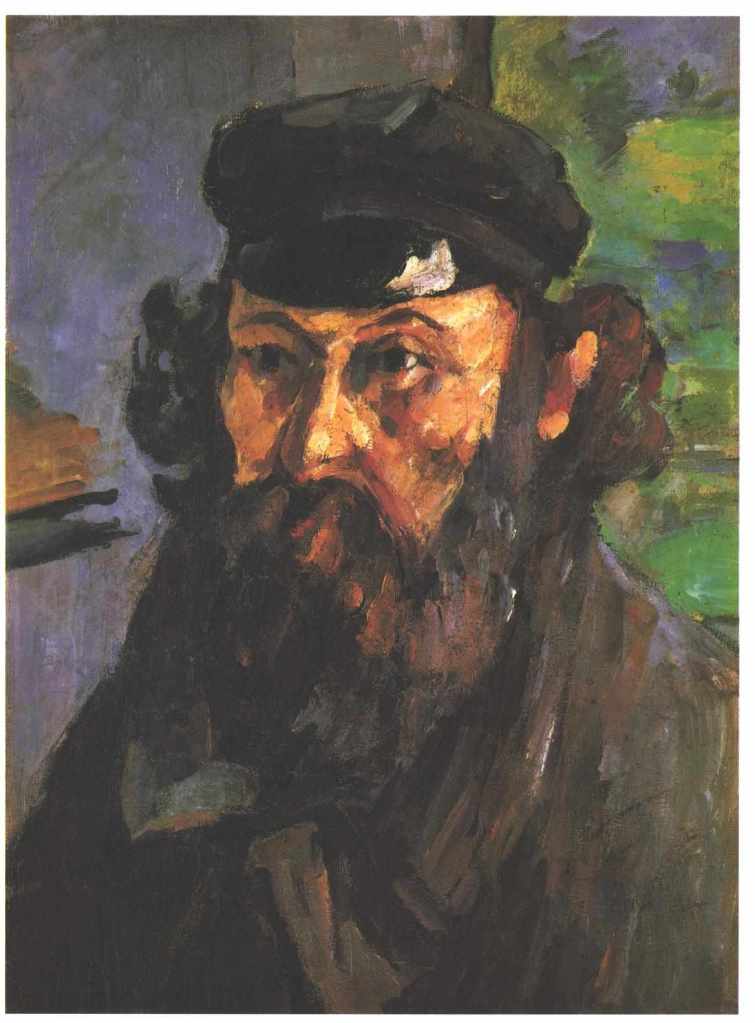


Such an amazing artist!! Thanks for sharing so many of his paintings, dear Marina. Happy February to you. 🤗
He really is! So glad you enjoyed this journey with me, my dear Sylvia.
😘🤗❤
This was a wonderful browse, Marina. It was so interesting to see the variety in his style. I feel like I just went to a museum! Thank you.
Ah, thank you so much, Diana. So happy you enjoyed this journey to his work with me. 🙏
I didn’t give Harlequin any praise. I really like it.
You do a great job with these posts, Marina!
xoxoxoxoxoooxoxoxoxoxoxo
Thank you dahling… I really enjoy re-living these works! On the Harlequin… for some reason I don’t like Harlequins but I added it cause it’s so good! 😉 xoxoxoxoxoxo
I like a good harlequin. I like the character from Batman, Harley Quinn. They made good use of the idea. xoxoxoxo
clever use! 😉
xoxoxoxoxoxoxoxoxoxo
Your post was such a treat to wake up to this morning! I greatly appreciate (and enjoy!) the art education you’re offering to the world.
Awww……thank you so much for your lovely words. I’m so happy your enjoying these journeys to artists work. I’m amazed at how I’m surprised and notice new things everytime I revisit a painter’s work.
You’re welcome! I took art history in college and I loved it–but it was a headlong rush from prehistory to Byzantium.
Would you believe me if I told you that all art history and music theory/history I took, I have completely forgotten?!!!! 😉
Music theory is forgettable in in my book. (Too much math.)
🤣🤣🤣🤣
Love this post, Marina. Beautiful art work and I love the still life and landscapes the best. The quotes are wonderful, too. This one: “It’s so fine and yet so terrible to stand in front of a blank canvas” reminds me of the creating process of writing, too.
Hugs, my friend. 💖💖💖
Isn’t this true for us all?!!!! 😉
I also love his landscapes!!!!!
So glad you enjoyed this journey, my dear Lauren! ❤💖❤
💕💕💕💕💕
🤗💖🌟🤗💖
The quote about the blank canvas reminded me very much of writing as well.
True, it’s the same for all arts and artists.
That’s why freewriting works so well. Do painters have the equivalent? (I’ve never thought to ask before!)
I can think of several things. For example starting to paint without preparing in any way. Just picking the paintbrush and letting the hand rather than the mind take over. I do this even if I have something very specific I want to paint, just to ‘loosen up’ my hand, before getting to it. Abstract can also be a kind of freewriting, but not as a rule.
Then do you paint over it?
No… I start anew. Even on my ‘abstract’ projects (in brackets because they are very specific to me), like my ‘Characters’ I paint till I’m pleased with my line. If not, I throw it away. Never correct or paint over. But that’s me. 😉
That’s what I thought you were going to say, but I thought I’d ask. The painterly version of the Delete key!
A ha ha… yes! 😉
This is great!
You are like an online Art Gallery.
Cézanne is an intriguing artist. I adore what he says about standing in front of a blank canvas.
The music is wonderful!
Norm has encouraged me to try canvas, again. I think I’d like to. However, the art supplies stores are all closed…. so I draw on paper. I went a bit wild buying art supplies when the stores were open, so the AGM drawings are in no jeopardy.
My faves in this collection are Forest Scene – path from Mas Jolie to Château Noir & Boy in a red waistcoat.
A bit off topic…have you covered Degas? I’ll have to look in your pages. You’ve covered so many at this point, I ca’t remember all. Also, as I am drawing Picasso Art Gowns… I’ll revisit that post as well!
WOOF , MEW and I love you!
❦🎨❦🎼❦🎨❦🎼❦🎨❦🎼❦🎨❦🎼❦🎨❦🎼
I love his paintings, especially landscapes (surprise surprise! 😉)
Canvas can be intimidating… until that first stroke! 😉 So, I can’t wait to see!!!
On Degas: https://marinakanavaki.com/2020/07/19/edgar-degas1834-1917/
I am really looking forward to the Picasso Art Gowns!!!!!!!!!
🎨🖌❤🖌🎨
💖💖💖💖💖
🤗🤗🤗🤗🤗
😘😘😘😘😘
💖💖💖💖💖
Just looking at the Degas link.
He was really smitten with ballerinas. I just needed to make sure!
🎨🖌❤🖌🎨
💖💖💖💖💖 xoxo
He certainly was!!!! 😉
1❤💖❤💖❤💖❤
💐 There’s no ballerina emoji. Flowers will have to do! xoxoxoxo
💃🦢🩰… as close as I got, but flowers are perfect for the ballerina!!!
❤🥰😍🥰😍🥰😍🥰😍❤
xoxoxoxoxo!
❤💖❤
I really enjoy your online curation, Marina, since there are many works of artists I’ve never seen before. When you include pieces typically outside one’s well know oeuvre, it’s always a revelation. Not all of us have all those marvelous coffee table books! The internet puts them at our fingertips through your discerning eye. The paintings I particularly like here are: The Hanged Man’s House, Large Pine and Red Earth, and Forest Interior. Mostly for their palette, of course 🙂
Of course I agree with you on your picks but still, I find it hard not to pick others too! It’s always a revelation to me too!
Thank you, my dear Mary Jo.
Have a beautiful day! Hugs!
🤗❤
Of course! Same to you!🤗🤗🤗
xoxoxoxoxo
Forgot to say that my favourite paintings are his Still Life.
He didn’t say he’d astonish Paris with an apple for no reason, right?!! 😉
😘😘
🤣😎
😉😘😘
Some wonderful quotes here, Marina. The bather made me laugh. Besides looking really cold, I didn’t know they had Speedo’s in those days. 😅
A ha ha ha.. Speedo’s!!!! 🤣
He does look cold doesn’t he?!!!
❤❤
I would say philosophers are those who expand the possibilities of human cognition, including perception. He was one of those, in the realm of vision, finding new ways, a bridge into something new that nobody had seen before or that had been blocked by academic rules.
…and I certainly agree with you!
Thank you for your insightful words, my friend! 🙏
I love Cézanne. We were in Aix-en-Provence for two weeks in 2013. We stayed in a house that was a couple of road west of Cézanne’s house at about the same level as his house. I climbed up on the hill behind the house and I could get a similar view of Montagne Sainte-Victoire that Cézanne had. I remember a woman in a class I was in thought it was weird for Cézanne to do so many paintings of Montagne Sainte-Victoire. I told the woman it wasn’t weird at all because the light and clouds and atmosphere are constantly changing. It’s similar to me doing photos of the Sandias almost daily. When we were in the hills south of Montagne Sainte-Victoire, I realized it looked similar to the Sandias from that perspective.
I understand exactly what you’re saying about the Sandias as I witness it through your amazing images. What a wonderful experience staying there, seeing the same views he painted!